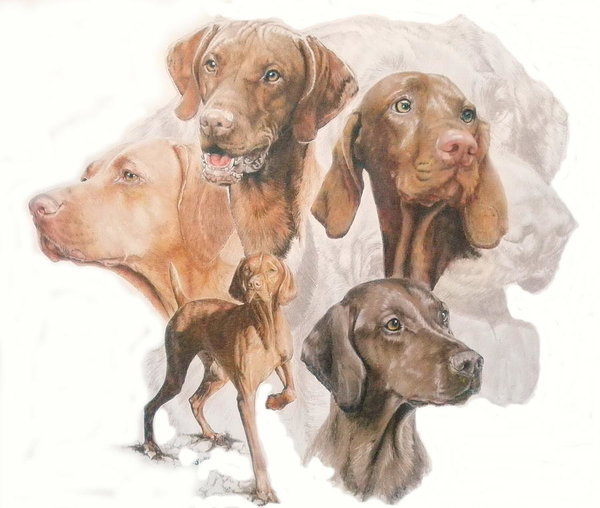
Owned by Hungarian noblemen wanting a “walking gentleman’s shooting dog,” the Vizsla is one of the smallest of the pointing breeds. With a “birthday” occurring over 1,000 years ago, it’s also one of the oldest European dog breeds in existence today. Like most of ancient Magyar history, the origins of the Vizsla is also a mystery, but Jeno Dus, an authority on the breed, suggests that ancestors of the Vizsla probably first arrived in Hungary in the 8th Century with Magyar tribesman and warlords. We know from primitive 10th century stone carvings of Magyar lords with their falcons that the hunting dogs with them were very similar to the modern Vizsla.
The name, “Vizsla” was first mentioned around 1350 as the name of a town on the Duna-folyó (Danube River), though we don’t know if the town was named for the dog breed, or the breed was named after the town. We also know that the Illustrated Vienna Chronicle, a compilation of ancient Magyar writings written between 1342 and 1382, included a chapter on falconry and a depiction of the Vizsla. Furthermore, private collections confirm the Vizsla’s noble ancestry, its history throughout the Middle Ages confirmed in letters written in the 15th and 16th centuries that are now in the National Archives in Hungary.
Sources differ from the meaning of the breed’s name. Was the breed named after a town? Does the name mean “pointer,” or does it mean “dog” as documented in the Berstence Glossary compiled at the end of the 14th Century? Did it come from the oldest layer of the Hungarian language, from the root “vis,” meaning “to search?” By any name, the Vizsla came to be known as the “Gift of Kings,” its breeding once restricted to nobility and royalty.
Image: “Hungarian Vizsla with Ghost” by Barbara Keith
http://barbara-keith.fineartamerica.com
http://barbara-keith.artistwebsites.com/
http://www.redbubble.com
http://www.zazzle.com/barbbarcikkeith
